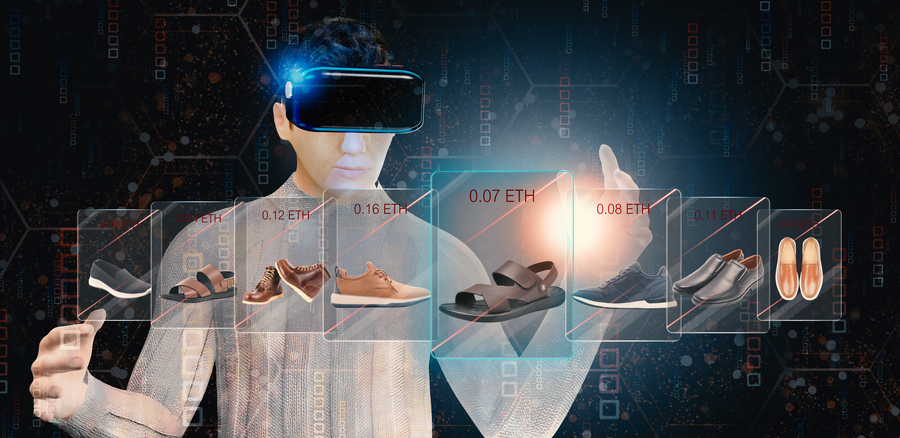Generative AI: Transforming the Future of Product Design
by Sovina Vijaykumar

In the dynamic field of product design and innovation, a quiet revolution is happening, where human creativity seamlessly merges with the limitless imagination of Artificial Intelligence. The era of generative AI in product development has dawned, promising a paradigm shift from sluggish processes to an unprecedented surge of creativity and efficiency. Imagine a world where every design concept is a stroke of collaborative genius between humans and machines, giving birth to products that not only meet but exceed our wildest expectations.
Ditch the Bottlenecks, Embrace the Burst:
Traditionally, product development resembled navigating through molasses–slow, sticky, and full of obstacles. However, with the advent of generative AI, we’re discarding the bottlenecks and embracing a burst of innovation.
Data-Driven Ideation:

Avoid struggling with the blank canvas. Imagine algorithms swiftly suggesting design directions from extensive datasets. Within minutes, dozens of shoe designs for specific demographics and sporting trends flood the creative space.
Rapid Prototyping on Steroids:
Physical prototypes are relics of the past. AI swiftly generates 3D models and simulations, enabling virtual testing of designs, identifying flaws early, and allowing lightning-fast iterations. A furniture company refines chair ergonomics through simulated stress tests before production.
Personalization Powerhouse:

Generative AI turns mass customization into reality. By analyzing user data, it tailors products to individual desires. Picture a cosmetic company crafting personalized blends tailored to skin tone and preferences or a sneaker brand adapting designs to a customer’s social media profile.
Real-Life Results, Tangible Evidence:
The promises of generative AI aren’t mere dreams; they’re tangible realities witnessed by industry leaders.
- Nike: Utilizing AI to design customized shoes for elite athletes, optimizing performance and fit to unprecedented levels.
- Unilever: Leveraging AI to personalize product packaging, creating not just products but experiences that drive engagement and brand loyalty.
- Autodesk: Using AI to generate architectural designs based on environmental factors and building codes, revolutionizing the construction process.
Case Studies: Innovation Made Visible:
Delving deeper into specific cases reveals the transformative power of generative AI.
Nutella Unica: AI generated millions of unique jar designs, fueling a collector’s frenzy and boosting brand awareness.
Coca-Cola Freestyle: AI personalizes soda, offering over 100 million possibilities based on customer preferences, dramatically increasing beverage sales.
The Unsheltered Hackathon: Designers and AI collaborated to develop innovative solutions for homelessness, showcasing the power of AI to tackle real-world challenges.
Ethical Considerations: The Human in the Machine:
While the capabilities of generative AI are awe-inspiring, it’s crucial to remember the human touch in product design.
- Transparency and User Control: It’s vital to be transparent about AI’s role and empower users to control data collection and personalization.
- Bias Detection and Mitigation: AI models can inherit biases; constant monitoring and mitigation are necessary for fair and inclusive design outcomes.
- Human-AI Collaboration: View AI as a collaborator, not a replacement, for human designers. It should augment human creativity, unlocking uncharted design possibilities.
Generative AI: A Revolution at the Doorstep:

It isn’t a fad; it’s a revolution knocking at the door. By embracing generative AI with a human-centric approach, businesses can accelerate innovation, personalize offerings, and design products that resonate profoundly with users. Are you ready to unlock the creative potential of AI in your product design process?
Statistical Data:
The statistics paint a compelling picture:
- The global AI in product design will reach $18.6 billion by 2025, with a staggering CAGR of 32.5% (MarketsandMarkets).
- Companies employing AI in product development report a 20% reduction in cycle time and a 15% increase in market share (Accenture).
- 70% of consumers prefer brands offering personalized products and experiences (PwC).
Conclusion:
In the grand tapestry of product design, generative AI emerges as the masterstroke, weaving together the threads of innovation, efficiency, and personalization. It’s not just about products; it’s about experiences that leave an indelible mark on the consumer psyche. The time to embrace this transformative technology is now, for it’s not just shaping the future; it’s sculpting an era where human ingenuity and AI coalesce to create wonders beyond our imagination. Are you prepared to be a part of this creative revolution? The choice is yours.